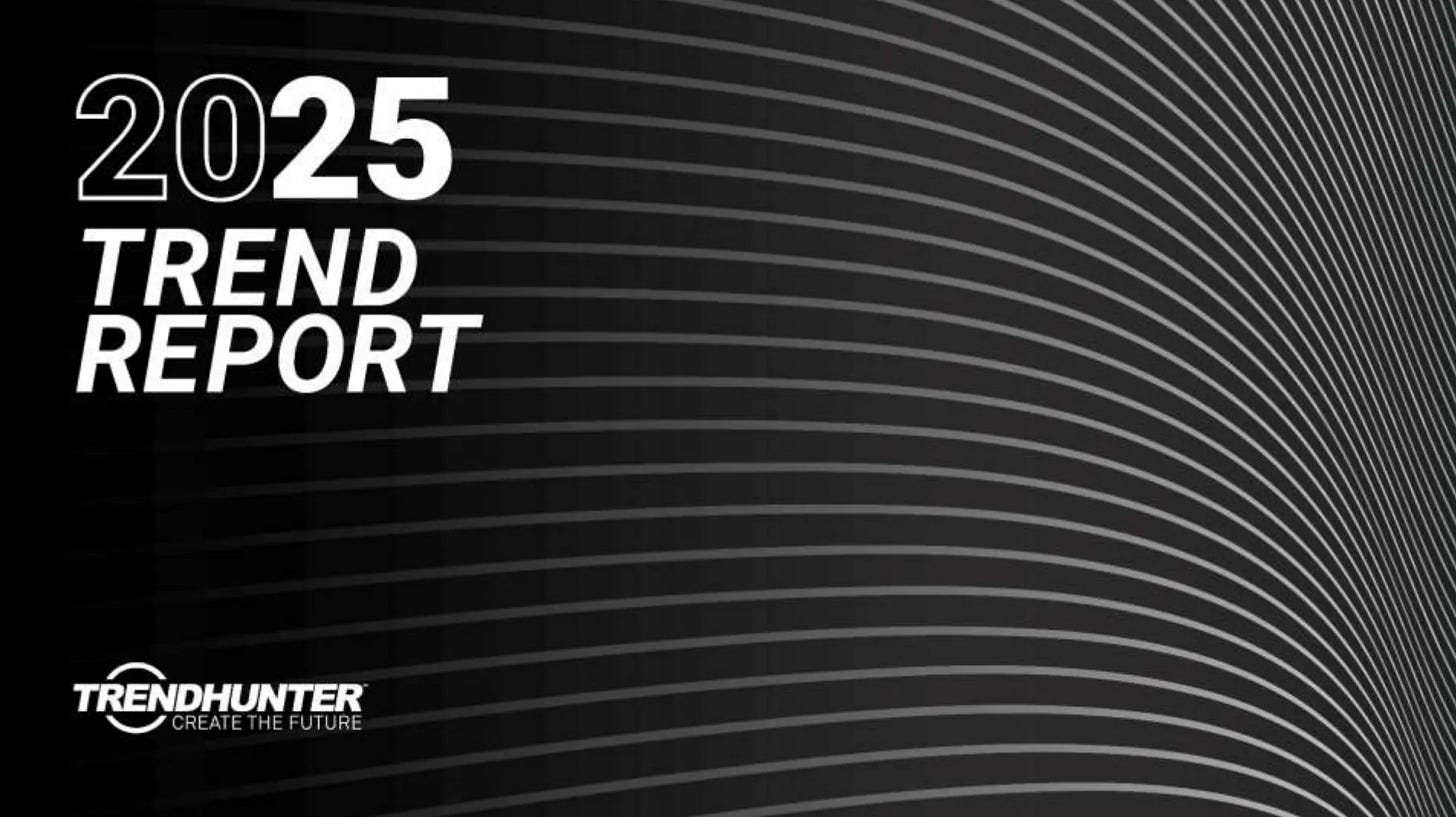Issue 131
Design Rewind 2024: Part II
Hello, dear readers! 👋
By tradition, in the last two issues of the outgoing year, we recall the best that was sent you during the year.
From several thousand links, I carefully select only the most valuable, applicable, important, influential, inspiring and transformative. It turns out to be a rich and valuable material.
In order not to overload you, the material is divided into 2 issues, approximately in half. Half last week and the other half is now.
After over 2 years of continuous delivering issues, I’d like to take a short break. Don’t worry, I’m planning to send next issue on January 10, 2025! Wishing you happy New Year and good holidays! And thank you for standing by❤️
Enjoy reading!
🗞 News and articles
A large 120-page report with an in-depth analysis of the trends of the near future. The authors analyzed such areas as marketing, design, technology, pop culture, innovation, neural networks, and a number of others.
For each trend, an approximate portrait of the audience, the geography of distribution, the level of popularity, and typical examples of products from real companies are indicated. Because of this, the selection turned out to be quite objective and valuable.
Direct link to the PDF report. At the very beginning of the presentation, there are promotional slides that need to be scrolled through.
Woah, opacity! A full guide to this badass hero of efficient UI design
Irina Nazarova from Evil Martians has released a guide on using translucent colors in interface design. She explained how such colors can reduce the number of styles and options for components and simplify the design process. They allow you to create universal solutions for buttons and themes, while maintaining accessibility and productivity.
The main thoughts:
Semi-transparent colors help to preserve the visibility of elements, under which the background color can often change. For example, the buttons
The gamut of the interface with translucent elements can be changed simply by repainting the bottom layer. This simplifies customization when the user has the opportunity to choose any shade of the theme.
The availability of translucent colors will strongly depend on the background. For example, the contrast may be higher on a light background than on a dark one.
When superimposing elements on top of each other, it is important to take into account that the colors will mix. For example, there will be brighter dots at the intersection of the lines, which must be avoided.
Translucency may not work well on low-performance devices. For example, on 10-year-old smart TVs and smartphones
, the guys also put together two online demos: to check the contrast and to test the devices for performance when processing translucent colors.
Navigation patterns in mobile applications. How to make the right choice?
A useful detailed article by Ksenia Toloknova about choosing navigation patterns in mobile applications. She analyzed a variety of applications, selected the most popular templates for 2023, and analyzed their strengths and weaknesses. She also pointed out some differences between the solutions for iOS and Android.
How to unmask fake Minimum Viable Products during the design process + part 2
Onsi Kahlaoui from Societe Generale talks in two parts about how to recognize that a team is going to make a fake MVP. And what to do instead.
Won't retell it, but in general, the articles are consonant with other texts on the topic of recent MVP: do few functions, solve a specific narrow task, but immediately with high quality, immediately so that users love your minimal product.
The Art of the Professional Pivot
Aaron Britt of Figma wrote about 6 approaches to changing career paths. They are based on the personal experiences of 6 creative specialists who not only shared their story, but also gave practical advice.
6 approaches:
The reframe. A view of the profession from a different angle thanks to analysis, criticism and advice from mentors.
The boomerang. Dismissal from the company for additional training, followed by a return to a new position.
The unfolding. A natural career turn, the point of which is to honestly listen to your true interests.
The stretch. A forced way beyond the scope of responsibilities to gain new knowledge and skills.
The hard left. A complete and drastic change of activity. It involves training and career development from scratch
The blend. The choice of the best strategy based on the analysis of many years of diverse experience
An article by Emil Kowalski on how to use animations to improve the product experience. He shares the principles that help make animations natural, fast, useful, and productive. The article contains visual interactive examples and code snippets.
The main thoughts from the article:
People like animations that seem natural, like in real life. It improves understanding and makes the experience more enjoyable.
Fast animations create a feeling of high performance. The optimal animation duration is less than 300 ms.
Animations should enrich the information on the page and be relevant. Avoid animations for frequently repeated actions. For example, text input animations can be annoying.
The ideal animation frequency is 60 frames per second. It is best to use the transform and opacity properties, as they minimally burden the rendering process.
Animations should be interruptible so that the user can stop them at any time.
Use media queries in CSS to disable animations for those who don't need them.
Align animations with the overall style and spirit of the product to create a seamless experience.










